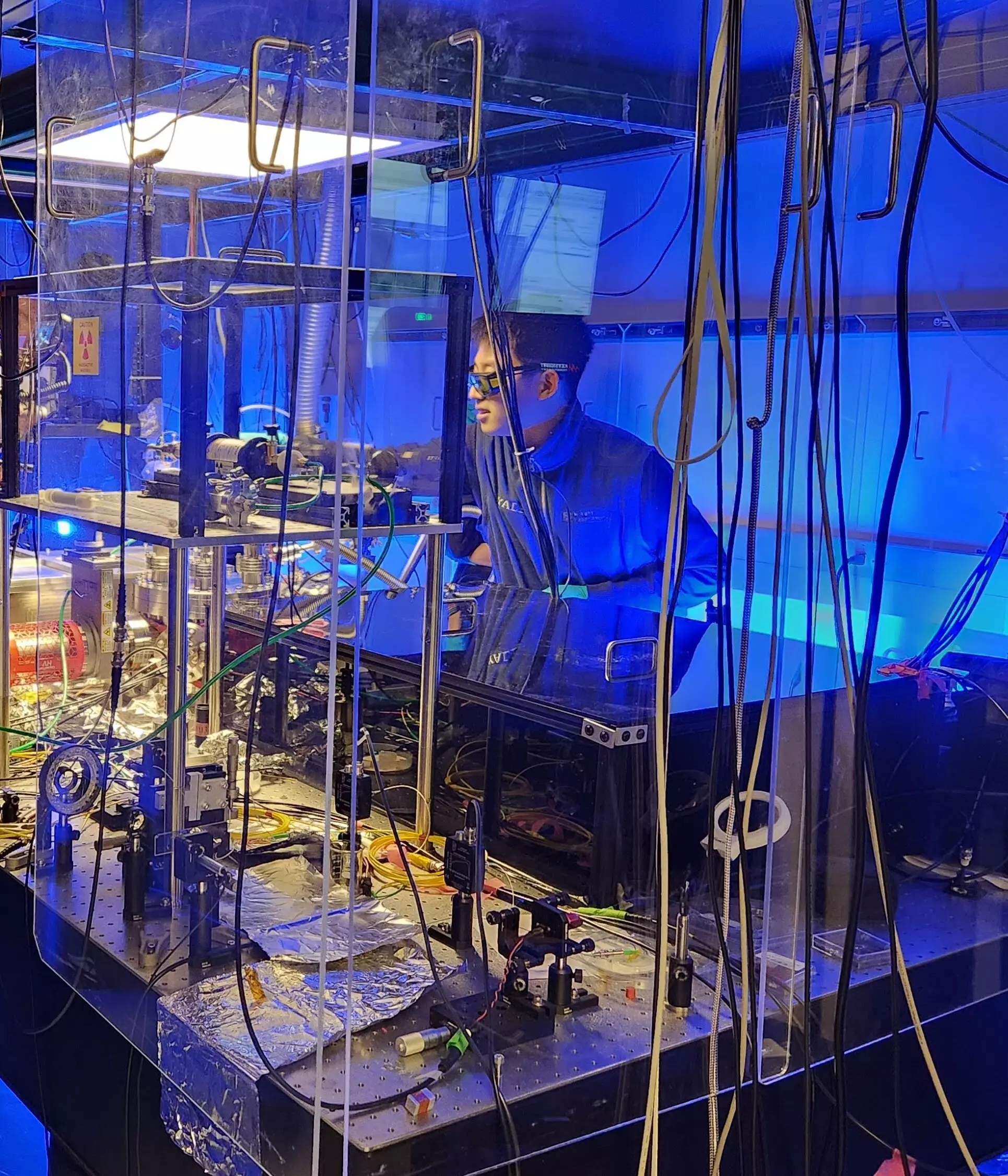In the rapidly evolving fields of physics and engineering, scientists are relentlessly pursuing innovative methods to probe the very fabric of matter at unprecedented scales. The introduction of advanced instruments—ranging from finely-tuned particle detectors to state-of-the-art accelerometers—has set the stage for a new era of exploration into the minuscule constituents of our universe. These developments not only promise enhanced observational capabilities but also bring the potential for groundbreaking revelations, as researchers seek to unveil the mysteries that lie at the core of atomic interactions.
A significant leap in this quest is exemplified by a recent endeavor led by researchers at Yale University, who have unveiled a groundbreaking method to mechanically detect individual nuclear decays. This process, pivotal in understanding how unstable nuclei release energy through radiation, could reshape our approaches to particle detection.
Unraveling Nuclear Decay: A New Methodology
The innovative strategy introduced by the Yale team stands out in its sensitivity to both charged and neutral particles emitted during nuclear decay—a feat not easily achievable with traditional detection methods. “Our group is developing sensitive micron-scale force sensors and accelerometers using optically trapped particles in vacuum,” explained David C. Moore, one of the leading figures behind this research. The remarkable sensitivity of these systems allows the team to detect forces produced by a single fundamental particle, such as an alpha particle. This is a profound advancement, as it opens the door to detecting particles that are typically elusive due to their lack of electric charge, such as neutrinos.
Moore and his colleagues meticulously crafted a method centered around monitoring the motion of a minute, dust-sized particle encapsulating radioactive nuclei. This approach capitalizes on the changes in an electric charge when charged particles escape during a decay event. The innovation lies in its simplicity and accuracy; by observing even the slightest shifts in the particle’s motion, researchers can discern the occurrence of a nuclear decay—a feat that signifies a monumental leap in detection capability.
Experimental Triumphs: Observing the Invisible
The initial results from this pioneering research are nothing short of remarkable. The team’s experiments successfully demonstrated the ability to detect individual nuclear decays with precision, showcasing an unprecedented capacity to observe recoil from emitted particles on a nanoscale. The researchers’ methodology involved utilizing laser light scatter to accurately track the position of a microscopically small sphere containing the radioactive material. “Our approach allows us to detect individual decays occurring within the particles even if they occur very rarely,” asserted Moore. This groundbreaking technique not only paves the way for studying elements pivotal to nuclear non-proliferation and monitoring but could also lay the groundwork for an entirely new dimension of nuclear physics.
What sets this advancement apart is its potential application in unveiling phenomena that have, until now, remained shrouded in mystery. The ability to detect neutral particles, which often slip through the grasp of conventional detectors, sets the stage for new investigations into dark matter and exotic particles—areas that have intrigued physicists for decades.
The Future: Horizons of Possibility
As the researchers look towards the horizon, they have ambitious plans to extend their innovative detection techniques even further. “In our future work, we are aiming to extend the same techniques to smaller nanoparticles,” Moore revealed. This endeavor could unveil capabilities to detect minute momentum shifts from elusive neutrinos, propelling our understanding of fundamental physics to even more profound depths.
The implications of this research resonate beyond mere scientific curiosity; they speak to the vast potential for advancing nuclear science, ensuring security, and even probing into the realms of dark matter and beyond. By shifting our capabilities in particle detection toward this new frontier, we can better understand the universe while standing at the cusp of a transformative leap in the field of physics.
In a world where the dance of particles governs the reality we perceive, the work at Yale is a stellar example of how innovation, creativity, and scientific inquiry can blend to unlock the secrets of nature like never before.


Leave a Reply